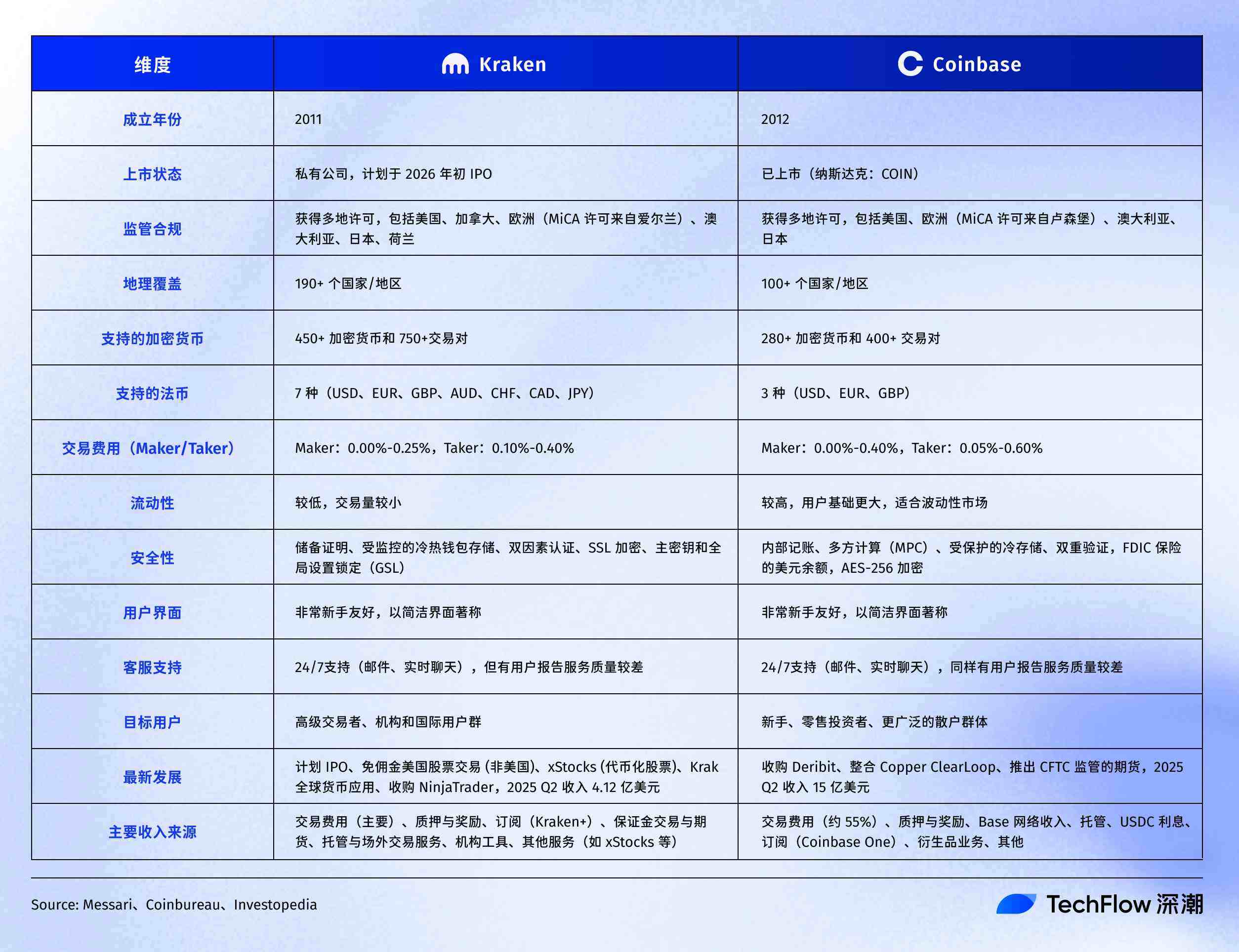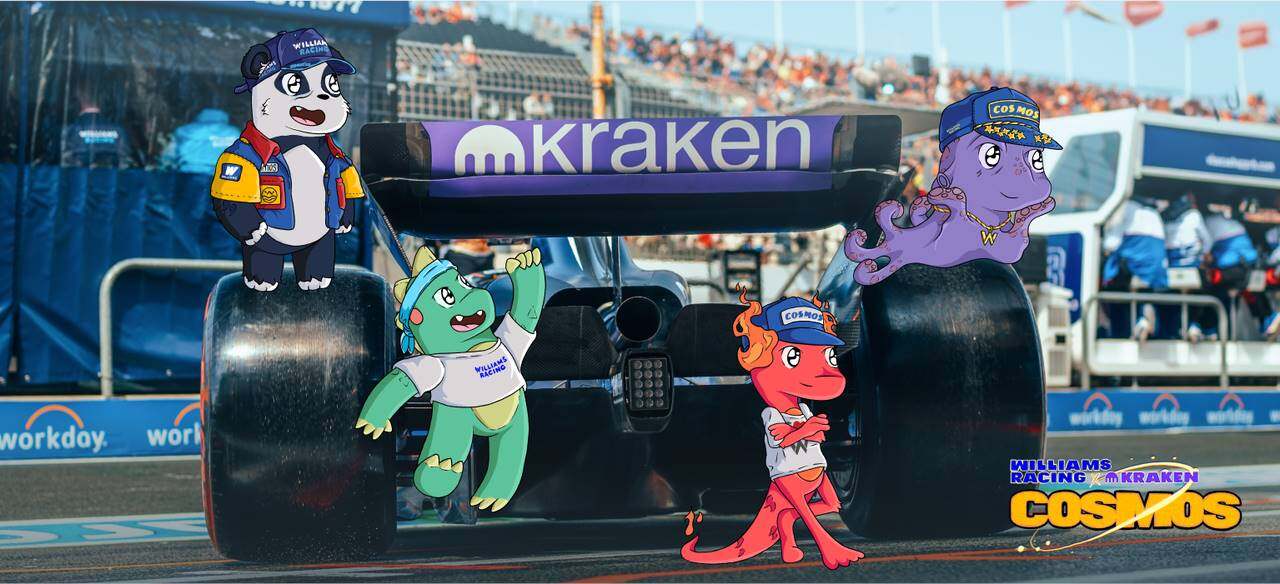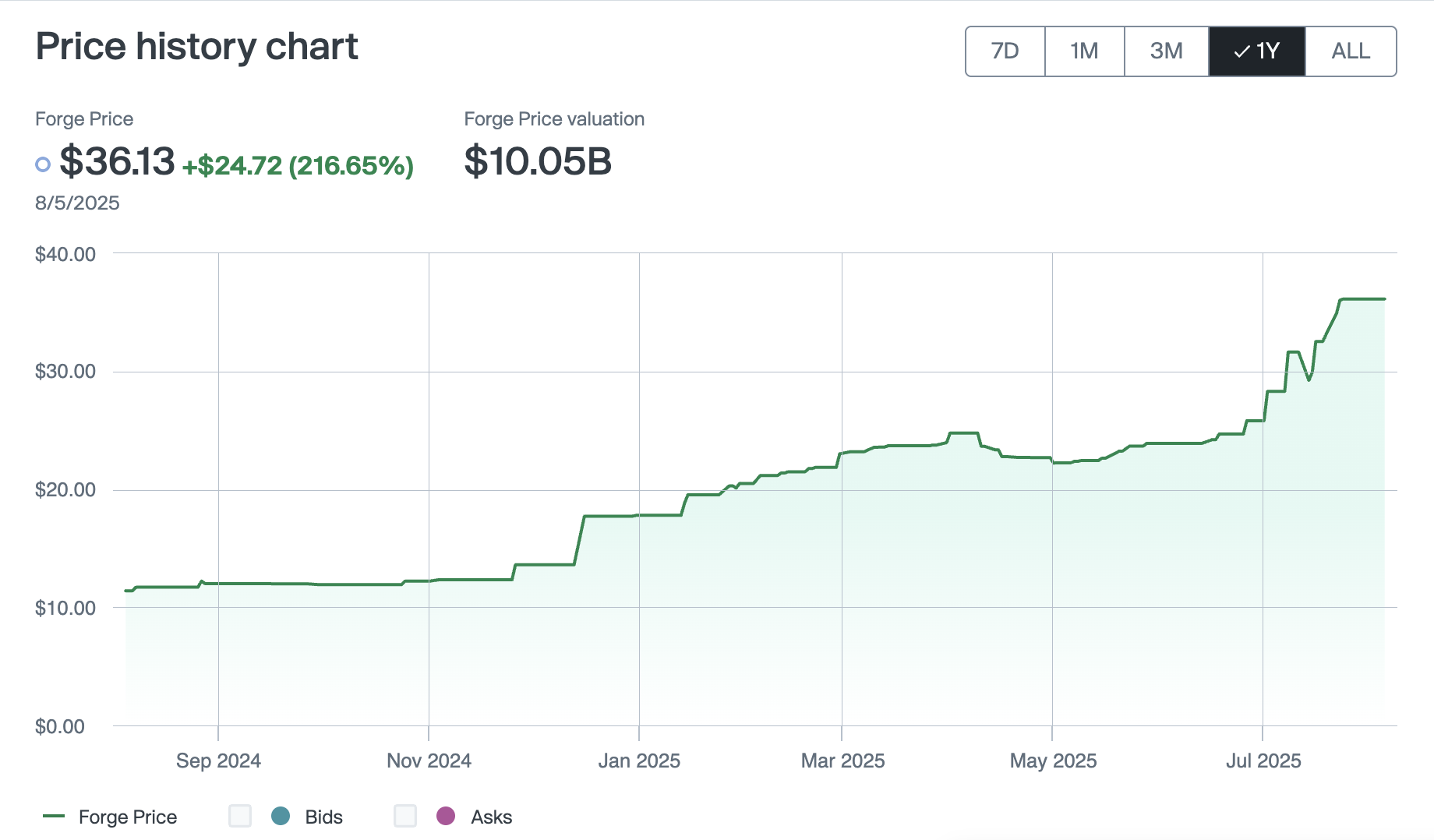Original title: “On the Eve of IPO, Kraken Awakens”
Original author: Yanz, Liam
In July 2025, the crypto market once again ignited the bull market flames.
Unlike previous bull markets, crypto assets like Bitcoin and the US stock market have begun to deeply integrate in this cycle. While everyone's attention is focused on Robinhood's tokenization of US stocks, a long-established exchange, dormant for years, is quietly opening the door to the capital market.
The exchange is called Kraken .
Once known as the "Big Brother of the crypto world," it was known for its security and robustness, yet it long languished beneath the glare of giants like Coinbase and Binance. In the Chinese community, it was long labeled a "safe withdrawal channel," and at one point, it was so low-key that it was practically forgotten.
Now, things have changed.
In the Kaiko Global Spot Exchange Comprehensive Score for the second quarter of 2025, Kraken ranked second with a score of 89, second only to Coinbase; quarterly revenue increased by 18% year-on-year, and trading volume reached US$186.8 billion; it launched the Layer 2 network Ink, the stock tokenization platform xStocks, and acquired NinjaTrader... The Kraken, which had been dormant for many years, suddenly turned around and caused a stir on Wall Street.
At the end of July, Kraken prepared its final round of financing at a valuation of $15 billion in preparation for its IPO in 2026.
From "an honest man in the geek circle" to "the next crypto unicorn", separated by a long-lasting internal struggle, Kraken's story is a 14-year transformation.
From a card dealer to an exchange founder
In the '90s, Jesse Powell was just a teenager obsessed with Magic: The Gathering.
Unlike other players who were keen on competing, he was better at finding arbitrage opportunities in the card market. That was the first time he realized: "Anything of value can be priced and traded."
At the turn of the millennium, Powell was working in technical support at an internet service provider when the online game Ultima Online became popular in the office.
This was the first large-scale online game with real money trading elements. A virtual castle could be sold for thousands of dollars. Exchanging virtual items for real money allowed Powell to see the prototype of "digitalization of real assets."
Soon after, he became obsessed with Diablo II. Initially, he simply killed monsters and sold items, earning $25 an hour, a respectable profit for an average player. But Powell soon discovered a more efficient way to profit: exchanging $5 in-game coins for rare items, then selling them on eBay for $30, netting a sixfold return on each transaction. This side hustle later expanded to include over 20 games, transforming into a small virtual currency trading empire.
Powell later called the experience “the prelude to cryptocurrency.”
In 2010, Bitcoin came into view.
Powell initially thought it was just another "World of Warcraft gold coin." But he soon discovered that Bitcoin solved the core challenges of virtual currency transactions—refund disputes, delivery difficulties, and expensive cross-border payments. Bitcoin's decentralization and low-cost transactions made Powell realize: "This could not only transform the virtual gaming economy, but could even reshape the real financial system."
In a year, he transformed from a virtual game currency merchant to a Bitcoin enthusiast.
In 2011, a friend he met while playing Magic: The Gathering invited him to visit the offices of Mt. Gox, then the world's largest Bitcoin exchange. It wasn't so much a visit as a dedicated trip to solve a problem.
During that visit, the infamous 880,000-coin theft occurred. Powell spent about a week and a half helping Mt. Gox resume operations, and it was during that time that he firsthand saw the enormous risks of the crypto world:
“If cryptocurrency wants to enter the mainstream, it needs a more serious player – an exchange that is secure, compliant, and can earn the trust of regulators and users.”
In the same year, Jesse Powell and technical partner Thanh Luu officially founded Kraken in San Francisco.
Unlike other entrepreneurs who pursue speed, Powell spent a whole year building a security team, passing third-party audits, and pioneering two-factor authentication (2 FA), becoming one of the first crypto exchanges that can publicly prove its security capabilities.
For the next decade, Kraken continued to expand at a slow pace.
In 2013, it became one of the first overseas exchanges to obtain a license from the Japanese Financial Services Agency; in 2014, it assisted in the liquidation of assets following the collapse of Mt. Gox, further establishing its reputation for compliance and security; by 2020, it had conducted business in more than 200 countries and regions, and obtained licenses from the United States, Canada, the United Kingdom, Japan, Australia and other countries, becoming one of the most comprehensive compliant exchanges in the world.
The groundwork for steady expansion has been laid, and Kraken only needs an opportunity to turn things around.
The transformation of established exchanges
For a long time, Kraken has been labeled as "old-fashioned, safe, and low-key", but behind this label is "old-fashioned and outdated".
In the Chinese crypto circle, it has long been labeled as a "safe exit channel" because it can quickly trade the stablecoin USDT into fiat currencies such as the US dollar and the euro. In the eyes of the public, it is like an old-school bank: stable and reliable, but lacks brand edge and has never led the narrative.
In contrast, Coinbase, also based in the United States, is like the "Apple" of the crypto world—sleek, easy to use, and ubiquitous.
It excels at marketing, from Coinbase Learn educational content to the 2022 Super Bowl commercial, NBA collaboration, e-sports team sponsorship and celebrity endorsements, and has gradually become synonymous with crypto assets in the minds of Americans.
In comparison, Kraken’s first thirteen years were more like a tech geek’s self-cultivation, like “Linux”—powerful and professional, but living in the geek circle for a long time.
Social media data may be more telling: while Coinbase’s X followers have reached 6.5 million, Kraken’s is still hovering around 1.6 million.

However, all this was completely overturned in 2025.
Kraken has been making headlines frequently, its image as a quiet, invisible cryptocurrency exchange has been replaced by a vibrant and active crypto-powerhouse.
- Stock Tokenization (xStocks): Through cooperation with Backed Finance, tokenized stock and ETF trading is launched on the blockchain, covering 60+ US stock assets such as Apple, Tesla, and Nvidia.
- Traditional financial mergers and acquisitions: Acquired retail futures platform NinjaTrader for US$1.5 billion to expand derivatives and futures trading.
- Stablecoin Ecosystem: Strategically invest in stablecoin issuer StablR to promote the global application of EURR and USDR.
- Layer 2 ecosystem Ink: Building its own blockchain network and laying out on-chain financial infrastructure.
- Institutional Services: Kraken Institutional provides full-stack digital asset services to hedge funds and ETF issuers.
The marketing transformation came earlier. Starting in 2023, Kraken also began to address its brand shortcomings.
From 2023 to 2025, Kraken took advantage of the last opportunity to sponsor the Williams Racing F1 team, boosting its brand influence. It then launched the Grid Pass digital collectibles (NFTs) to attract the attention of high-net-worth individuals through global live broadcasts of racing events.

In 2024, Kraken reached jersey sponsorship cooperation with Tottenham Hotspur of the Premier League, Atletico Madrid of La Liga, and RB Leipzig of the Bundesliga, allowing the Kraken logo to appear on global sports live broadcasts.
The awakening of Kraken's brand and business is just superficial; the root of the change lies in the crisis.
In 2022, Kraken experienced a management crisis.
Then-CEO and co-founder Jesse Powell's strongly liberal cultural values clashed with the team's values, sparking internal discontent and unrest. Former CMO Matt Mason abruptly departed in February 2020, after just one year at the company, leaving the position vacant for two years. The head of product changed three times in four years. Since 2021, the position of Chief Business Officer has been vacant, and was later eliminated altogether.
With continued vacancies in senior management and a split team, founder Powell chose to step down as CEO in 2022 and become chairman of the board.
This change is both a transfer of power and a deep reflection on corporate culture.
Since then, Kraken has embarked on a path of transformation.
In the same year, Mayur Gupta joined as CMO and used global brand marketing to reshape Kraken's image for the first time. Sports sponsorship, NFT collection, and content dissemination allowed this "tech geek exchange" to communicate with Generation Z for the first time.
The series of marketing strategies he led were later recognized by the market, and he was listed as one of the "Most Innovative CMOs of 2024" by Business Insider.
A more significant business change occurred at the end of 2024, when Tribe Capital co-founder Arjun Sethi joined Kraken as co-CEO.
It is worth noting that Tribe Capital is Kraken’s second-largest institutional investor, and its founder Arjun Sethi joined Kraken’s board of directors in 2020. From the outside, this is also a shareholder’s self-rescue.
Sethi , who came from a Silicon Valley VC background, believes that Kraken must complete an identity upgrade, and the key word is just one: "breaking the circle."
From a single crypto exchange, it has transformed into a global digital financial platform.
Under Sethi's leadership, Kraken launched xStocks, a stock tokenization trading platform; acquired NinjaTrader, and expanded into derivatives and futures trading.
"We are open to more acquisitions in the future," Sethi said.
The co-CEO believes that one new area where digital assets have "huge potential" is corporate financial management, with "many public and private companies exploring holding cryptocurrencies."
Today, Kraken has emerged from its past internal strife and is no longer the silent siren. It has a new voice, a new brand, and a new story.
It is no longer satisfied with being a crypto safe haven, but wants to build a bridge across crypto assets and traditional finance, and even become a core participant in the global asset tokenization wave.
This 14-year-old exchange has begun to rush towards the IPO stage with a new attitude.
Heading for an IPO
At the end of July 2025, The Information reported that Kraken was raising $500 million in new funding at a valuation of $ 15 billion , a 36% increase from its valuation of approximately $11 billion in 2022.
According to data from the over-the-counter equity trading platform Forge, Kraken's over-the-counter stock price has more than tripled in the past year, and its current valuation has exceeded $10 billion.

This round of financing is generally regarded by the industry as the last round of sprint before IPO. It is expected that Kraken will enter the capital market as early as the first quarter of 2026.
For Kraken, this is an excellent policy window.
In March 2025, the U.S. SEC withdrew its lawsuit against Kraken for securities violations; in June of the same year, Kraken obtained the EU Crypto-Assets Market (MiCA) license, achieving full compliance operations in the EU.
All this is inseparable from Trump’s friendly policies towards the crypto industry, and also inseparable from the Kraken founder’s early bet on Trump.
In June 2024, Kraken co-founder Jesse Powell personally donated $1 million worth of crypto assets to Trump, mostly in ETH. After Trump launched the meme coin TRUMP, Kraken became the first US cryptocurrency exchange to list the TRUMP token.
In addition to policy support, Kraken also demonstrated strong momentum in business operations and financial data.
From a business perspective, Kraken's revenue structure is diverse and continues to expand, mainly including transaction fees, staking rewards , leverage and derivatives services , as well as asset custody, OTC matching and institutional customized tools, among which transaction fees are the core.
Kraken expects to achieve $1.5 billion in revenue in 2024 and $472 million and $412 million in the first half of 2025, respectively, representing year-over-year growth of 19% and 18%, with adjusted EBITDA reaching $187 million and $80 million, respectively.
In the second quarter of 2025, Kraken's total trading volume reached US$186.8 billion , a year-on-year increase of 19%; the assets under management on the platform reached US$43.2 billion, a year-on-year increase of 47%; the total number of customers exceeded 15 million , supporting more than 200 digital assets and 6 national currencies.
Compared to Coinbase, Kraken's current daily trading volume is approximately $1.37 billion, about half of Coinbase's. However, Kraken is forging an independent path through a differentiated business narrative.
The first is the tokenization of stocks.
Kraken is one of the biggest proponents of stock tokenization. On the xStocks platform , launched in partnership with Backed Finance, over 60 stock tokens, including Apple, Tesla, and Nvidia, are now listed, creating a new gateway for non-US investors to purchase shares of US-listed companies, with 24/7 trading available. Users can also use xStocks for DeFi staking, liquidity pools, and smart contract invocations—achievements unattainable in traditional securities trading.
In the future, Kraken’s identity will no longer be limited to an exchange, but it is more likely to evolve into “Kraken Bank” .
As early as September 2020, Kraken became the first digital asset company in the United States to obtain a Special Purpose Depository Institution (SPDI) banking charter in Wyoming. This means that Kraken can provide digital asset custody, US dollar deposit accounts, and 24/7 settlement services like a traditional bank, but it must adopt a full reserve system to avoid the risks associated with fractional reserve banking.
In the future, Kraken officially plans to launch a wider range of financial products, including debit cards for institutions and individuals, mobile banking products connected to crypto wallets , and wealth management and payment solutions.
Its official announcements emphasized the desire to build a bridge between the future crypto economy and the existing financial system. This echoes Jesse's words from the founding of Kraken: For cryptocurrency to enter the mainstream market, it needs a truly serious player—one who can operate robustly, work with regulators and law enforcement agencies, explain cryptocurrency to banks, and build a bridge from traditional systems to the crypto world.
- 核心观点:Kraken 转型为加密独角兽,冲刺 IPO。
- 关键要素:
- 2025年Q2交易量1868亿美元,同比增长19%。
- 推出股票代币化平台xStocks,拓展传统金融。
- 150亿美元估值融资,为2026年IPO铺路。
- 市场影响:推动加密与传统金融融合。
- 时效性标注:中期影响。



